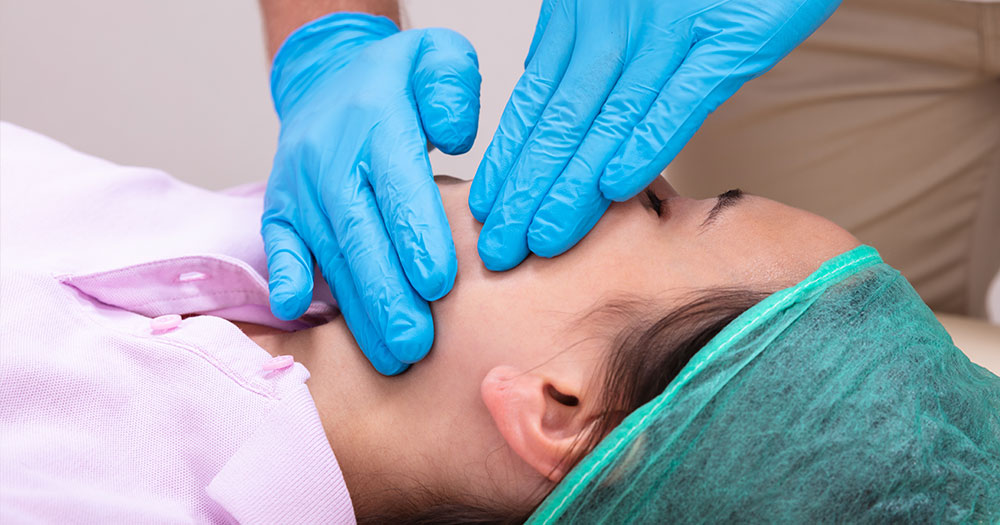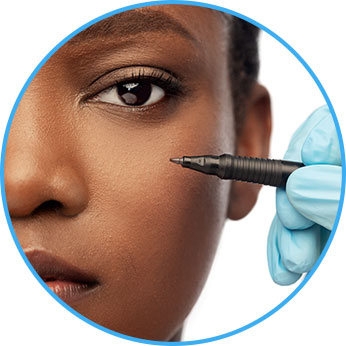
2021 saw a significant rise in the popularity of the aesthetics industry with more and more workers turning remote and wanting to appear their best selves on Zoom calls. This increase in awareness and acceptance of enhancements has created a wealth of new products and treatments being utilized by consumers, including millennials and men.
With the majority of patients hoping to achieve a naturally-refreshed look with less invasive procedures, the current goal of the aesthetics industry is to boost self-confidence by creating the very best version of yourself.
Carpe Diem Partners surveyed leaders in the healthcare, medical devices, and medical aesthetics industries to determine the key trends causing a surplus of interest in aesthetic enhancements, as well as increased competition for pharmaceutical companies.
Leading
Trends

Although the current economic climate has generated concerns for consumers, the aesthetics industry is still thriving with many younger generations becoming interested in procedures. According to one leader that Carpe Diem Partners surveyed, “In 2018, total sales of professional aesthetic products approached $11.2 billion. Through 2023, the market will expand by 10.5% per year to $18.4 billion.”
Toxins and dermal fillers are the leading categories in both volume and growth, with one leader saying the popularity of these trends are due to “new indications, greater acceptance driven by younger generations, and social media.” The most popular areas for fillers include “the lower face – jaw, chin. Body use is also of great interest but for many, it is seen as cost prohibitive because of the volume required.”
Although one leading pharmaceutical company continues to dominate the market, a professional leader in the industry stated that “revenue is high enough for any company with a toxin.”
However, as the market evolves and competition increases, “we will see a combination of price-cutting by look-a-like toxins such as well as an influx of new technologies with differentiation like longer duration and liquid formations.”
Currently, the U.S. makes up 35% of the market due to price, which is quite high.
Although one leading pharmaceutical company continues to dominate the market, a professional leader in the industry stated that “revenue is high enough for any company with a toxin.” However, as the market evolves and competition increases, “we will see a combination of price-cutting by look-a-like toxins such as well as an influx of new technologies with differentiation like longer duration and liquid formations.” Currently, the U.S. makes up 35% of the market due to price, which is quite high.
Trends Gaining Momentum

Two newer areas of interest in the industry include Regenerative Medicine and body shaping. According to one of the leaders surveyed, Regenerative Medicine is increasing interest, but “it is still a gray market, with no clear regulatory pathways, standardized protocols or robust clinical evidence; this includes PRP, Fat and Stem Cells.” According to the leaders Carpe Diem surveyed, more than 30 companies are trying to break into the space of Regenerative Medicine, but “big pharma will have a distinct advantage because of FDA relationships and ability to invest in trials and protocol development.”
Body shaping has also gained interest since 2018. Overall, the global market for all body shaping and skin tightening device platforms and disposables reached approximately $1.4 billion. Growth in this category is expected to expand through 2023 by 12.7% per year, driven by rising consumer interest in these procedures. The leader added that a third of the market is owned by one popular company with others following not far behind and added that:
this category of aesthetics is by far the most widely accepted amongst all age groups and genders.””



This same leader affirmed that North America is the largest single market in these areas “with platform and disposable sales of $735 million in 2018 and annual growth of 11.6% through 2023” and gave insight into the Asia Pacific market stating that market “will experience solid gains at 16.7% per year, while Europe / Middle East / Africa and Latin America will experience annual growth of 11.1% and 10.4%, respectively.”
One other aesthetic area to note is physicians dispensed cremes. The growth in this area has slowed, however, leaders said there continues to be innovation with one skincare company that has made a significant impact and is expected to grow at a CAGR of 40%.
What Is Causing Increased Growth in the Aesthetics Industry?

Many leaders Carpe Diem surveyed noted that Covid-19 had a direct impact on the growth of the market. With many working remotely and turning to Zoom calls for meetings, the desire for looking appealing and presentable on camera increased. With consumers not spending as much money on social activities, money was freed up for medical procedures. Treatments have become normalized due to social media with a push for a “natural look.”
Aging populations are increasing and investing in toxins more while younger generations are drawn to enhancing their features through fillers. Wages have also increased in recent years, leading to consumers having funds to use towards their appearance. The focus is undoubtedly on non-invasive or minimally invasive procedures with little to no down time due to healing.
Closing Thoughts
With the rise in interest in the aesthetics market, competition has also increased. In order to lead in the industry, professionals must offer competitive pricing, a robust portfolio of procedures, an awareness of key trends, an adaptability to constant, dynamic change, an innovative commercial space, and the ability to secure high quality technology for the development of new products.


These market insights from Carpe Diem Global Partners are gathered from the firm’s extensive client work leading Board, CEO, CXO, and CHRO executive search engagements for public and private multinational companies. For deeper, custom insights, contact Roberta Fiore at rfiore@carpediempartners.com.

